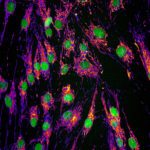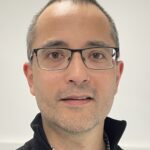Link to Pubmed [PMID] – 25776552
Mol. Cell. Biol. 2015 May;35(10):1838-47
Stomatin-like protein 2 (SLP-2) is a mainly mitochondrial protein that is widely expressed and is highly conserved across evolution. We have previously shown that SLP-2 binds the mitochondrial lipid cardiolipin and interacts with prohibitin-1 and -2 to form specialized membrane microdomains in the mitochondrial inner membrane, which are associated with optimal mitochondrial respiration. To determine how SLP-2 functions, we performed bioenergetic analysis of primary T cells from T cell-selective Slp-2 knockout mice under conditions that forced energy production to come almost exclusively from oxidative phosphorylation. These cells had a phenotype characterized by increased uncoupled mitochondrial respiration and decreased mitochondrial membrane potential. Since formation of mitochondrial respiratory chain supercomplexes (RCS) may correlate with more efficient electron transfer during oxidative phosphorylation, we hypothesized that the defect in mitochondrial respiration in SLP-2-deficient T cells was due to deficient RCS formation. We found that in the absence of SLP-2, T cells had decreased levels and activities of complex I-III2 and I-III2-IV(1-3) RCS but no defects in assembly of individual respiratory complexes. Impaired RCS formation in SLP-2-deficient T cells correlated with significantly delayed T cell proliferation in response to activation under conditions of limiting glycolysis. Altogether, our findings identify SLP-2 as a key regulator of the formation of RCS in vivo and show that these supercomplexes are required for optimal cell function.

